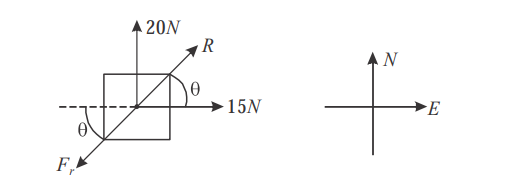Q. A $10\, kg$ block is placed on a horizontal surface whose coefficient of friction is $0.2$. A horizontal force $P=15 \, N$ first acts on it in the eastward direction. Later, in addition to $P$ a second horizontal force $Q=20\, N$ acts on it in the northward direction : (Take $g=10 \, m / s ^{2}$ )
Laws of Motion
Solution:

